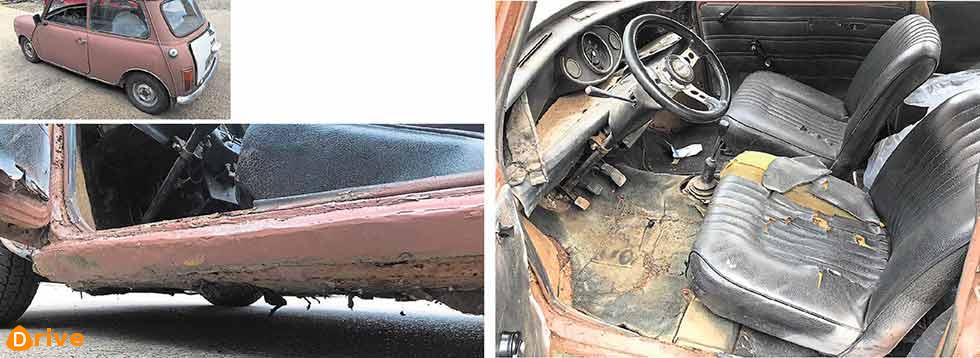The value of the pound may have endured a struggle since the EU referendum over two years ago, but shopping overseas still stands out as an attractive option for classic car buyers. Ever-increasing online connectivity and communication continues to provide greater access to faraway markets than ever before, putting a whole array of rare, rust-free and potentially bargain-priced vehicles at your fingertips. However, as so often when money is a factor, there are unscrupulous sellers ready to take advantage of the trust of naïve buyers and leave them heavily out of pocket, as a recent case with a Mini in Portugal has proved.
There are several reasons why you may consider purchasing a classic abroad. These include the possibility of less or no rust due to warmer and drier climates, as evidenced when our sister title Mini Magazine bought an immaculate classic Mini from Italy in 2016 and converted it to right-hand-drive for a total cost that compared very favourably to buying a UK example.
Furthermore, prices may be a lot keener where a car has not developed such a cult following in its domestic market, or there are simply more examples available to keep prices lower. It could even be that you’re looking for a desirable or perhaps oddball classic never readily available in the UK – something like contributor Ian Seabrook’s mighty Dacia for example, which was located and driven to Wales from its native Romania.
Shows, events and magazines provide plenty of evidence of successful purchases, but not everyone gets so lucky. Recently, we were alerted to the case of an 18-year-old buyer based in the USA, who purchased a classic 1970s Mini from an online seller in Portugal. The buyer thought he was getting a running and driving car after being sent pictures, which as it transpired, were of another Mini.
He parted with around €1800 in good faith, before having the car transported to the UK by a transport company. Allegedly, when the transporter arrived in Portugal the car was lifted on to the truck before the driver had even had a chance to visit the office, meaning he had no opportunity to test whether it ran or drove as promised. Photos of the car were sent to the owner who flagged up that it wasn’t the same one as he was sold, but by then it was too late.
The Mini was subsequently delivered to the UK in readiness for shipping to the US on a roll-on/roll-off boat via Southampton docks. On arrival at an intermediary point in Swindon, the car was apparently rolled off the transporter and photographed for the approval of US customs. The car that had been supplied was a non-runner, and was so filthy with dirt, spiders and mice excrement that it was rejected by US customs because it needed de-contaminating.
The transport company didn’t offer such a service, so the job of cleaning the car was given to Blake Elkins of Cambridge Mini Works. “I was sent one picture of the back of the car, and it didn’t actually look too bad. I was told it would just be a case of hoovering it out, but when the car was delivered, it was clear the buyer had been completely ripped-off.”
The condition of the car certainly left a lot to be desired. As well as a mixture of poor paint and surface rust, there is serious structural rust and some very poorly fabricated repairs. The sill areas are particularly bad, while the front end is completely misshapen. Inside, it’s a mixture of torn and missing trim, while the front suspension has completely collapsed.
“It’s so far gone that I wouldn’t even bother trying to repair it,” added Blake. “This is a prime example why you should never buy a car without seeing it or at the very least getting someone to inspect it, no matter where in the world the car is! It must’ve cost the buyer a fortune, especially with all the transport fees on top.”
Should the UK lose the benefit of single market rules after Brexit, buyers could well be casting their net further and further afield in the hunt for a bargain. In the UK, you can usually judge the car by the seller, description and online MoT test history. But buying from another country removes the partial safety net of the latter, making a personal inspection or a trusted opinion all the more vital. And remember, a plane ticket could be a cheaper alternative to a bad purchase. As this case illustrates, photos do lie, sometimes inadvertently and sometimes deliberately. We’ve seen plenty of listings on websites using library photos or images taken from other adverts, so if doubt, move on.
It’s also important to be present at collection time, or, once again, have someone present you can trust. The majority of overseas sellers will be genuine, but the onus is on the buyer to do their homework in order to avoid getting caught out. Get it right, and you could have the rare and solid classic you always wanted. Get it wrong, and it could cost a whole lot more than you bargained for.






